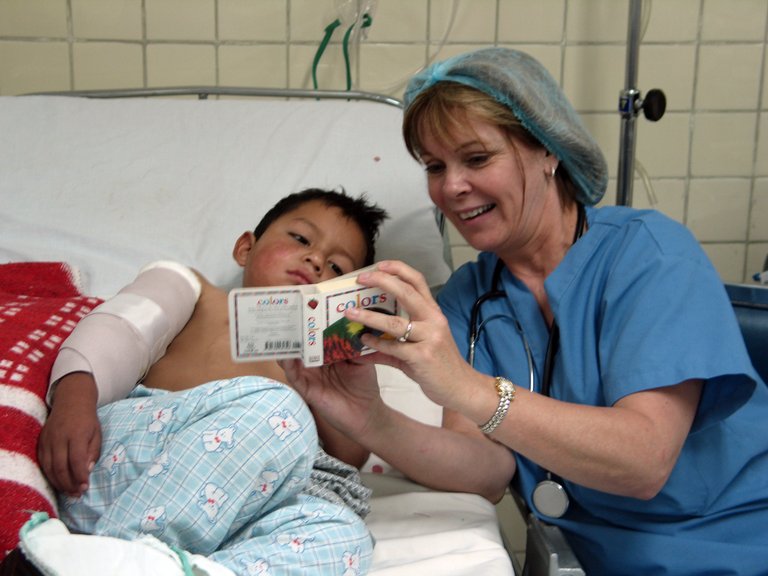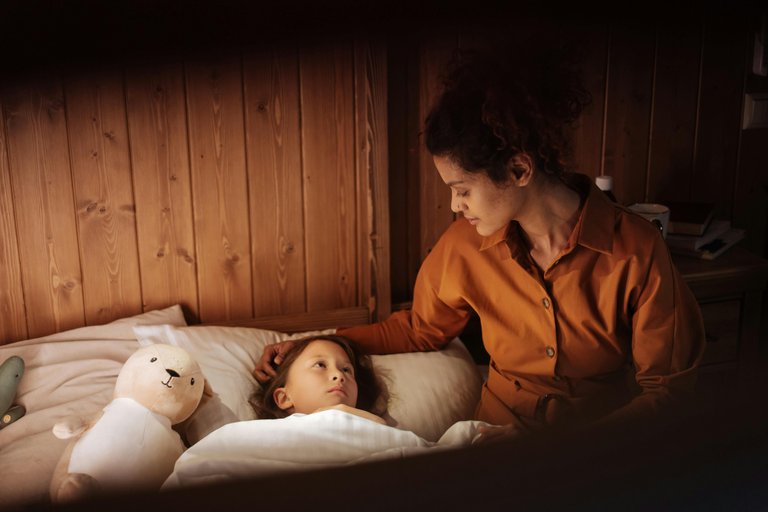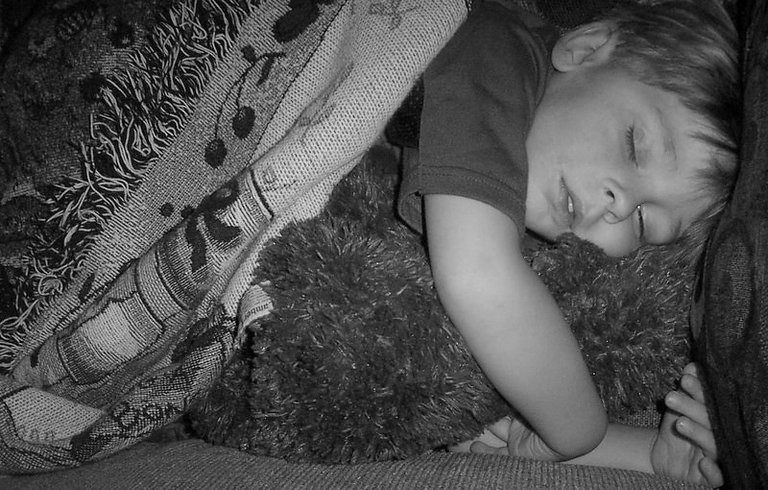My sister keeps telling me about her colleague whose child consistently falls sick, she is very worried about this child because the mother had been waiting and hoping to get pregnant for the past six years before she eventually had this baby, and now that she has her, it seems sickness has chosen to frustrate both mother and child.
I remember asking her if the child was a sickle cell patient, and she responded that she was not privy to that information. The awareness of sickle cell has become more rampant than it used to be, and that is the reason why a good friend of mine made a sound decision to break up with the love of her life a few years ago when she discovered he belonged to the As genotype group just like herself.

Image Credit
This decision was a tough one that not everyone would be willing to make, but to avoid the pain that would affect the child to be born as well as get herself and her husband frustrated in the long run, they knew they needed to stay away from each other. Let’s talk about sickle cell disease a little bit today.
Children and adults with sickle cell disease were born with it, it is passed down from parents through genes. Most likely, anyone affected with the disease has an abnormal type of hemoglobin, which is the protein in the red blood cell that carries oxygen to other body parts, but when there is an abnormality created by the presence of sickle cell disease, it means the tissues and body organs will not be able to get sufficient oxygen required for survival.

Image Credit
When the red blood cell is healthy, and the hemoglobin normal, it has a round shape and can easily move through the blood vessels, but on the other hand, when a child has sickle cell disease, the red blood cells become hard and sticky. A sickle cell disease child on the other hand, has red blood cells in the form of a letter C shape, making the red blood cells clump together therefore limiting movement through the blood vessels, they get stuck in small blood vessels and prevent the normal flow of blood, and it is as a result of this blockage that pain comes, also creating damage to major organs in the body.
Even healthy cells die, but sickle cells die faster than healthy cells. Usually, the spleen would help to filter out infections from the blood, but sickle cell gets stuck in this filter and dies. Having a more reduced healthy red blood cell would lead to a case of anemia, the sickle cells could also damage the spleen and when the spleen isn’t healthy, it makes children more exposed to infections.

Image Credit
Children who have sickle cell disease begin to show symptoms early in life, some begin from as early as 5 months. Parents who have one child that has sickle cell disease, stand a chance of having another child who will have the disease. Symptoms may vary amongst children, and they may either be in their mild or severe form.
Anemia happens to be the most common symptom shown by a child with the disease, anemia would make a child easily pale and tired. Jaundice is another common symptom to watch out for, remember we mentioned earlier that sickle cells do not live for as long as normal red blood cells, they die faster than the liver can get them filtered out. The yellowing of the skin, eye, and mouth which characterizes jaundice is caused by bilirubin released when the red blood cell dies.
At the point when the sickle cells get stuck together and the flow of oxygen is blocked in the tiny vessels in the lungs, it creates acute chest syndrome. If it happens suddenly, at a time when the body is under stress spamming from fever, infection, or dehydration, it can be a deadly case.
The process of blood blockage in the vessel comes with pain, this pain can happen anywhere but most likely in the arms, legs, and chest. When children are younger, they may experience a painful swelling of the finger and toe too, tissue death is also very possible in this situation.
The spleen also gets enlarged and painful, when sickle cell gets enlarged and builds up there. Fewer amounts of red blood cells can move at this point, thus creating a sudden drop in hemoglobin, if not treated at once it may lead to a deadly situation.
There is a possibility of stroke too, when blood flow is blocked to a part of the brain and when this happens it could lead to the damage or death of brain cells. The symptoms of stroke displayed are greatly dependent on the side of the brain that has been affected.

Image Credit
It could be, loss of balance, serious headache, weakness of the arm or leg on one side of the body, difficulty with speaking, walking, or understanding. The case of clinical stroke usually affects children between the ages of 2-9, there have however been prevention strategies created to lower the risk.
Through cognitive studies, it has been found that children and adults with sickle cell disease show signs of silent brain injury most often, as well as silent stroke. Silent brain injury is damage to the brain without showing any form of outward stroke. Silent brain injury could create learning problems, inability to make decisions, and even hold down a job.
Sickle cell diseases can cause injury to the blood vessels in the eyes, with the retina being the most common spot of damage, where it is possible for blood vessels to overgrow, get blocked, or bleed. The retina happens to be the light-sensitive layer of the tissue that lines the inside of the eye and sends visual messages through the optic nerve to the brain.
Sickle cell disease can create problems with the blood vessels in the heart and errors with heart functions. It is possible for the heart to become enlarged and people can now develop pulmonary hypertension too. Those people with sickle cell disease who consistently get blood transfusions may have heart damage from iron overload.
With injury made to the blood vessels in the lungs, it can become difficult for the heart to be able to pump blood through them, thus creating pressure in the lung blood vessels to rise. High pressure available in the blood vessels can create pulmonary hypertension, creating shortness of breath and fatigue.
The kidneys are very sensitive to the deformed red blood cells, making it difficult for the kidney to produce urine as concentrated as it should be. This may result in the need to urinate more, uncontrolled urination, and a case of bedwetting as a result. Other problems include; blood in the urine, kidney disease, protein loss through urine, and reduced kidney disease.
The male with a sickle cell disease can also have priapism, which is a situation of an unwanted and sometimes painful and prolonged erection. This happens when the blood flow out of an erect penis is blocked by sickle cells, and if this goes on for a long time, it can cause permanent damage to the penis creating a case of impotence.
Gallstones are also a common problem for people who have sickle cell disease. Gallstones may be formed early in life but will not show symptoms for years, symptoms are produced through nausea, vomiting, and right-side upper belly pain.
There is also a rare possibility of sickle cell intrahepatic cholestasis, which happens when the sickled red cells block blood vessels in the liver. This blockage prevents sufficient oxygen from getting into the liver tissue. Although the episodes are sudden and may even recur, while children often recover from them, adults have been seen to have chronic problems that lead to liver failure.

Image Credit
What about leg ulcers? Sores that start small and get bigger and bigger. The number of ulcers may vary from one to many. While some would heal quickly, others may last for a longer period, and in some cases, reoccurrence happens too.
A child affected with sickle cell disease would eventually grow to maturity, but may sometimes, grow more slowly than their peers due to anemia. A woman with SCD getting pregnant could be risky for both mother and child. There could be complications from blood clots, infections, serious episodes of pain, and high blood pressure.
There is also a higher risk of premature births, miscarriages, and under-weight babies. With all these difficulties and problems that could arise for a sickle cell child or adult, daily activities will be impaired and may even become depressing for the affected person.
Sickle cell is, unfortunately, a lifelong condition but advanced scientific research has helped with treatments that will help to avoid complications and help the affected person stay active. Daily doses of penicillin and immunizations would help to prevent infections. Kids with sickle cell disease are advised to get all recommended vaccinations.
Image Credit
Folic acid supplements have also been found to help kids make new red blood cells, some medications can be used to manage a crisis when it happens. Blood transfusions for serious anemia or to prevent some possible complications.
There is also voxelator, a daily medicine that would help reduce sickling and increase the number of red blood cells, helping them hold tightly to oxygen. There is also, crizanlizumab, a medicine given through IV infusion that can help make red blood cells more slippery and reduce painful crises.
L-glutamine, is as well a daily medication taken by mouth to reduce pain. We have stem cell transplant also called bone marrow transplant, which has now been proven as an improved cure for sickle cell disease. Although, a complex and risky venture, but most times successful.
These improved treatment options have helped several sickle cell patients have a long and more enjoyable life, and there is still more ongoing research about the options for more possible treatments.
As a parent or caregiver, you have more work to do with a sickle cell child, you start by learning about what you need to know about the disease and watching out for signs of trouble. Encourage your child to drink lots of water, and never get exposed to cold.
Avoid going out under hot weather and drink lots of water, help the child manage stress, and find out from an expert the activities that your child can engage in. Make sure to eat healthy as a family and the child takes all medications as instructed.
The child should never be exposed to the consumption of alcohol, smoke, or the use of drugs, as this may cause severe pain and other health challenges.
For Further Studies.
https://kidshealth.org/en/parents/sickle-cell-anemia.html
https://www.hoacny.com/signs-and-symptoms-sickle-cell-disease
https://my.clevelandclinic.org/health/diseases/12100-sickle-cell-disease

Hi, I am Tobi, a writer, speaker, relationship blogger, and lover of good music. I love making friends and learning from people. If you want to hear me speak about relationships and general life issues, you can find my YouTube channel where you can watch any episode for free, please do not forget to subscribe, friends. I sincerely appreciate every love I get from here, Kindly do well to keep them coming.
https://www.stanfordchildrens.org/en/topic/default?id=sickle-cell-disease-in-children-90-P02327
https://www.mayoclinic.org/diseases-conditions/sickle-cell-anemia/symptoms-causes/syc-20355876

